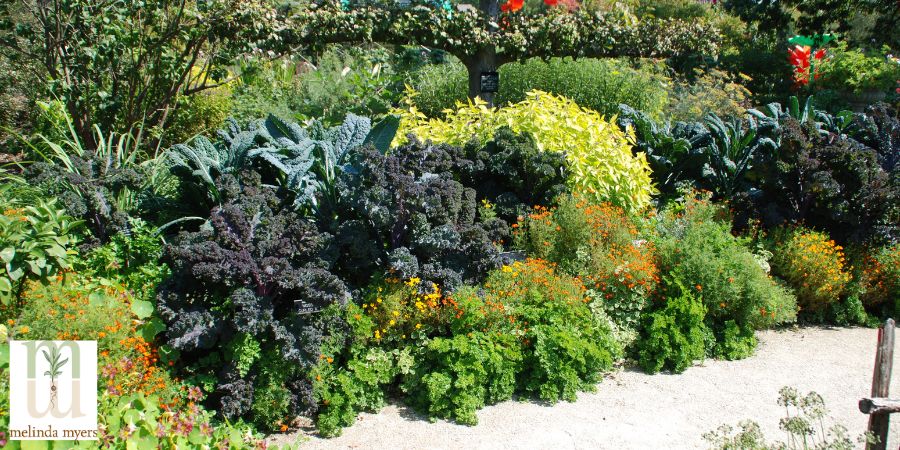Revolutionize Your Garden: Climate Solutions

In the face of climate change, our gardens are more than just spaces of beauty and relaxation; they are battlegrounds where we can fight for a greener future. Imagine transforming your backyard into a thriving ecosystem that not only looks stunning but also contributes to the health of our planet. With modern garden solutions for climate change, you can turn this vision into a reality. Let's dive into the world of eco-friendly gardening and discover how sustainable practices can make your garden a climate-resilient haven.
Understanding the Impact of Climate Change on Gardens
Climate change is not just a distant threat; it's already affecting our gardens. Rising temperatures, unpredictable weather patterns, and increased frequency of extreme events like droughts and floods are challenging traditional gardening practices. But don't despair—there are innovative solutions that can help your garden thrive despite these challenges.
The Role of Climate-Resilient Plants
One of the most effective strategies for combating climate change in your garden is to choose climate-resilient plants. These hardy species are adapted to withstand the rigors of a changing climate, from heatwaves to heavy rainfall. Plants like succulents, native grasses, and drought-tolerant shrubs are excellent choices. They require less water and are more likely to survive harsh conditions.
For example, the California poppy is not only beautiful but also drought-tolerant, making it a perfect addition to any garden looking to conserve water. Similarly, the creeping thyme is a low-maintenance ground cover that can withstand both heat and cold, providing year-round interest.
Embracing Sustainable Practices
Sustainable gardening is about more than just planting the right species; it's about adopting practices that minimize your environmental footprint. Here are some key strategies to consider:
Water Conservation
Water is a precious resource, and with climate change, it's becoming even more scarce. Implementing water-saving techniques like drip irrigation and rainwater harvesting can make a significant difference. Drip irrigation delivers water directly to the roots of plants, reducing evaporation and runoff. Rainwater harvesting systems collect and store rainwater for later use, ensuring that your garden stays hydrated even during dry spells.
Composting and Soil Health
Healthy soil is the foundation of a thriving garden. Composting is a fantastic way to improve soil health while reducing waste. By turning organic materials like food scraps and yard waste into nutrient-rich compost, you can enrich your soil and support plant growth. Composting also helps to sequester carbon, reducing the amount of greenhouse gases in the atmosphere.
Green Technology in the Garden
Green technology is revolutionizing the way we garden. From solar-powered garden lights to smart irrigation systems, there are plenty of innovative tools that can help you create a more sustainable garden. Solar-powered lights not only save energy but also add a charming ambiance to your outdoor space. Smart irrigation systems use sensors and weather data to optimize water usage, ensuring that your plants get just the right amount of hydration.
Urban Gardening: A Modern Solution
Living in the city doesn't mean you have to give up on gardening. Urban gardening is a growing trend that allows city dwellers to create green spaces in even the smallest of areas. Whether it's a rooftop garden, a vertical garden, or a community plot, urban gardening offers numerous benefits.
Vertical Gardening
Vertical gardening is a space-saving solution that turns walls and fences into lush, green canvases. By growing plants vertically, you can maximize your garden space and create a stunning visual display. Vertical gardens also help to insulate buildings, reducing energy consumption and cooling costs.
Community Gardens
Community gardens bring people together to grow food and flowers in shared spaces. These gardens not only provide fresh produce but also foster a sense of community and connection to nature. They are a great way to promote sustainable practices and educate others about the benefits of eco-friendly gardening.
The Benefits of Eco-Friendly Gardening
Eco-friendly gardening is not just good for the environment; it's also good for you. By adopting sustainable practices, you can enjoy a multitude of benefits, from improved mental health to cost savings.
Mental and Physical Health
Gardening is a therapeutic activity that can reduce stress and improve mental well-being. Spending time in nature has been shown to lower blood pressure, boost mood, and enhance overall health. Plus, growing your own food ensures that you have access to fresh, nutritious produce.
Cost Savings
Sustainable gardening practices can also save you money. By growing your own food, you reduce your grocery bills. Water-saving techniques and energy-efficient tools can lower your utility costs. And by choosing climate-resilient plants, you minimize the need for expensive maintenance and replanting.
Environmental Impact
Perhaps the most significant benefit of eco-friendly gardening is its positive impact on the environment. By adopting sustainable practices, you help to conserve water, reduce waste, and lower greenhouse gas emissions. You also support biodiversity by creating habitats for wildlife and promoting pollinator-friendly plants.
Conclusion
Revolutionizing your garden with modern solutions for climate change is not just a trend; it's a necessity. By embracing eco-friendly gardening, sustainable practices, and green technology, you can create a climate-resilient haven that benefits both you and the planet. So, why wait? Start your journey towards a greener future today. Click here to learn more about sustainable gardening practices and join the movement to combat climate change one garden at a time.
FAQs
What are some easy-to-grow climate-resilient plants? Some easy-to-grow climate-resilient plants include succulents, native grasses, and drought-tolerant shrubs like lavender and rosemary. These plants require less water and can withstand harsh conditions.
How can I start composting in my garden? To start composting, you can set up a compost bin or pile in a shady spot in your garden. Add a mix of green materials (like food scraps and grass clippings) and brown materials (like leaves and twigs). Turn the pile regularly to aerate it and speed up the decomposition process.
What are the benefits of vertical gardening? Vertical gardening maximizes space, creates a stunning visual display, and helps to insulate buildings, reducing energy consumption. It's a great solution for urban gardeners with limited space.
How can community gardens benefit my neighborhood? Community gardens bring people together, provide fresh produce, and foster a sense of community. They also promote sustainable practices and educate others about eco-friendly gardening.
What are some cost-saving benefits of eco-friendly gardening? Eco-friendly gardening can save you money by reducing grocery bills, lowering utility costs, and minimizing the need for expensive maintenance and replanting. It's a win-win for both your wallet and the environment.


0 Response to "Revolutionize Your Garden: Climate Solutions"
Post a Comment